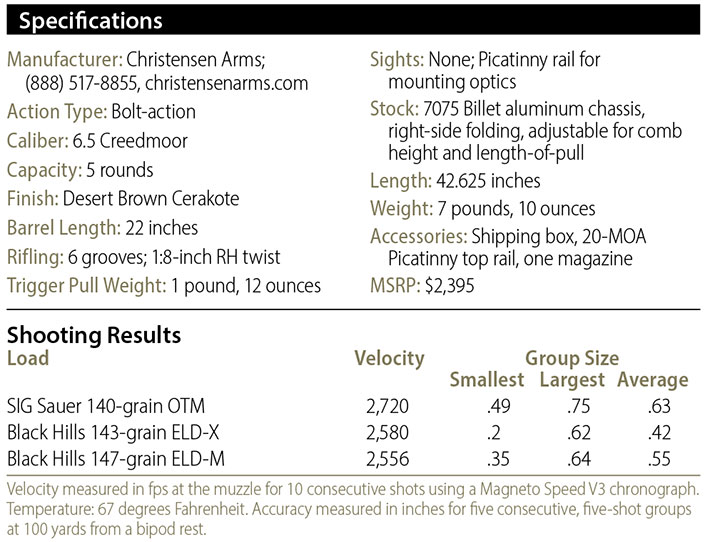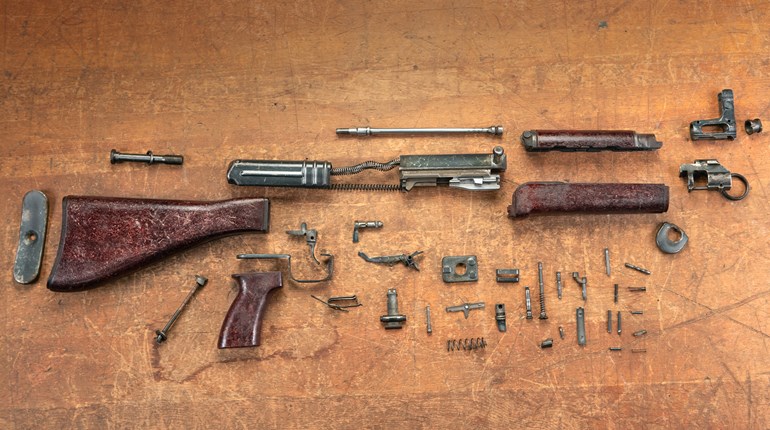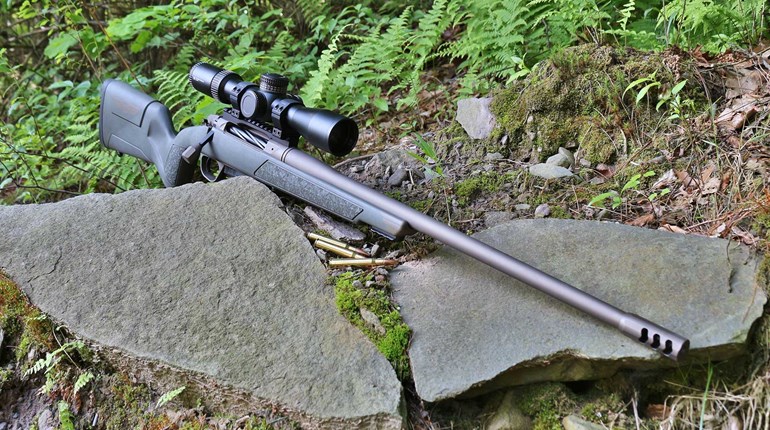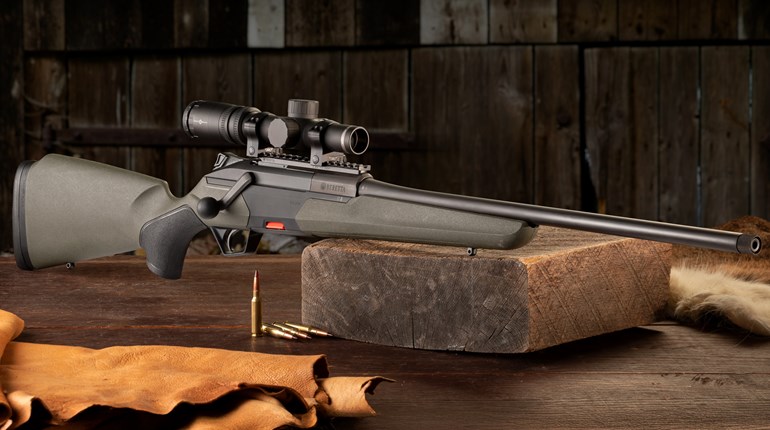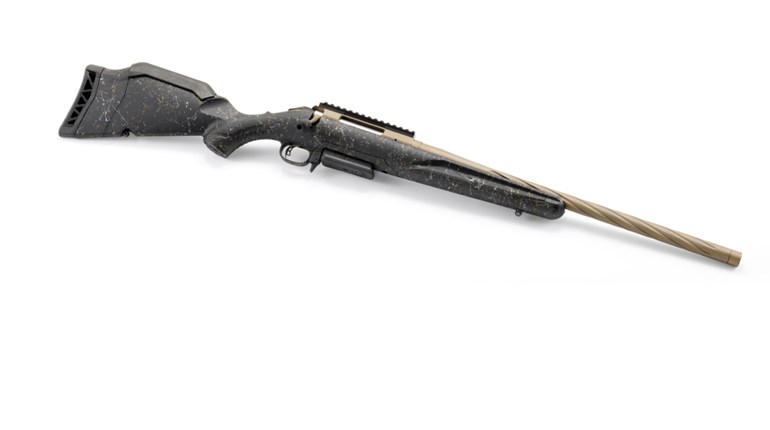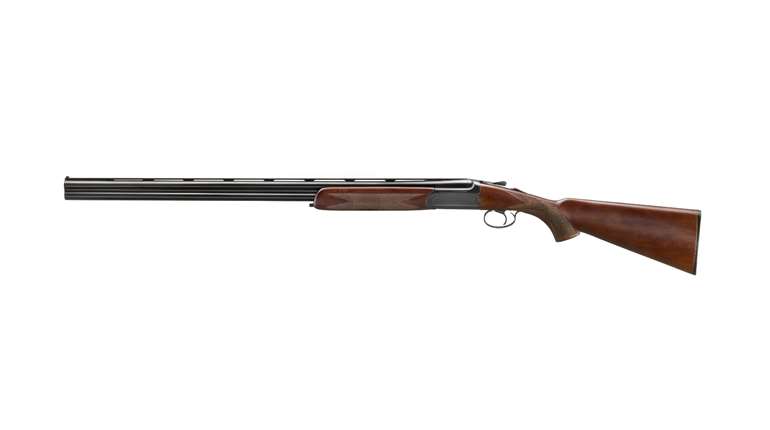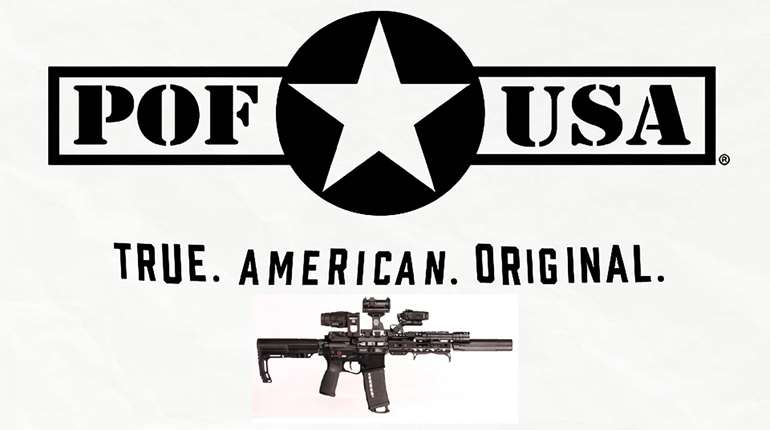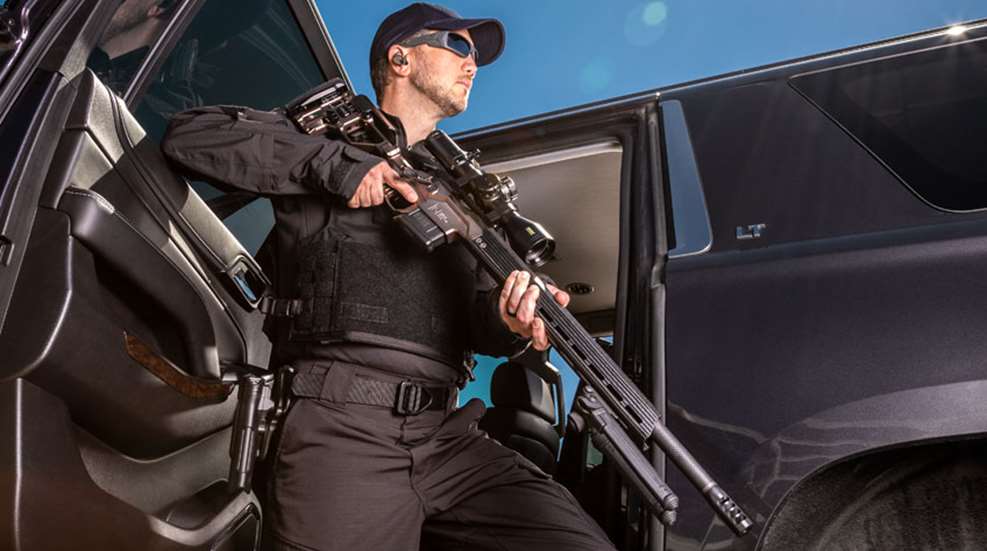
The use of carbon fibers for industrial applications can be traced to early light-bulb developments during the 1880s. Those early fibers were not strong enough for structural products, so another seven decades would pass before high-tensile, carbon-fiber applications would literally take off. Beginning in the late ’50s, the aeronautical and space industries sought to incorporate this ultra-high strength-to-weight-ratio material into things that flew high and fast. The use of carbon fiber to lighten firearm-component weights came later, mainly in the form of lightweight, attractive furniture options. Several companies have worked hard in recent years to perfect the use of carbon fiber to further lighten critical firearm components while simultaneously improving performance along the way.

Christensen Arms is a leader in this pack, having more than two decades of firearm-component innovation under the company’s belt. With roots in the aerospace industry and an eye toward holding its firearms and parts to that same level of precision, Christensen lays claim to the first carbon-fiber rifle barrel. Boasting a growing fleet of bolt-action, Modern Sporting Rifle and handgun offerings, this Utah-based operation offers ultra-light weight and high performance in an industry where those two characteristics are often mutually exclusive. As further testament to the seriousness of the Christensen Arms team, every one of its rifles comes with a guaranteed sub-minute-of-angle (or better) level of accuracy.
Each of the company’s current crop of bolt-action rifles uses carbon fiber in some form—composite stocks, barrels and/or smaller components. As the only model sporting a chassis-style action mount, its Modern Precision Rifle is clearly aimed for the quickly evolving tactical and long-range turnbolt markets. As of this writing, this model is available in eight different chamberings, with weights ranging from 6.9 pounds on the low end to 8.4 pounds on the high side. The 22-inch-barreled 6.5 Creedmoor rifle tested was an excellent example of how a combination of the right components and attention to detail can yield an easily portable rifle that shoots circles around the competition.
I was pleasantly surprised at the test rifle’s light weight and superb balance upon removing it from the shipping box. I reflexively expected excess front-end weight due to a heavy, target-contour, 22-inch launch tube. The last few inches of that carbon-fiber-wrapped barrel protruding from an equally carbon-fiber handguard should have reminded me that the Modern Precision Rifle is far from typical. Its 5⁄8x24-tpi-threaded muzzle is fronted by a side-ported brake with four, removable setscrews on top. Removing one or more screws allows users to change the way the brake handles blast and—in theory—how recoil forces are transmitted to the shooter. Under the attractive carbon-fiber wrapped around the barrel lies a 416R stainless-steel, button-rifled core. As is typical of such barrels, the front and rear sections of the steel liner are enlarged to match the carbon fiber’s full outer diameter and to cap both ends of the wrapping.

The Modern Precision Rifle’s freefloat fore-end contrasts nicely with a Desert Brown billet-aluminum chassis and stock assembly. The 17-inch tube has a large, hexagonal cross-section and provides multiple M-Lok-compatible cooling slots along the sides and bottom. An included, six-slot Picatinny rail section will mount into any of the M-Lok positions. No rail options are currently available for the fore-end’s topside, relegating the small holes running along its length to cooling duties. The fore-end is attached to the rifle’s chassis by six, countersunk 3⁄32-inch screws. Despite the freefloat tube’s length and composite construction, I found it to be as rigid as any other long fore-end I have used.
The sleek chassis has a left-side cutout to facilitate magazine changes without coming off prone position. Those AICS-pattern mags are locked in place by a paddle-style catch, positioned at the front of the removable trigger guard. What appears to be a nickel-size, recessed button set high in the frame’s right side is actually a steel insert that allows the right-side-folding stock to lock into the folded position magnetically. The system allows for quick deployment of the stock and, while folded, protects an oversize bolt knob. A two-position safety, mounted in the usual right, rear position atop the Modern Precision Rifle’s action, allows cycling of the bolt while in the safe position. A nitrided, 416T stainless-steel action rides in a V-block formed by the chassis and is locked into position by front and rear action screws. The twin-lugged bolt body is spiral fluted and features a plunger-style ejector and AR-type extractor. A 5.5-inch section of 20-MOA rail sits atop the 700-style action. Without any provision for a freefloat top rail, this setup will make it difficult to use inline night optics without adding some form of receiver rail extension.
The bolts securing the included Magpul MOE-K pistol grip and separate trigger guard must be removed to gain access to the rifle’s rear action screw. The trigger guard slides out of position on machined rails once its own screw has been removed. After these fasteners, along with the fore-end’s screws and both action screws, have been removed, the action comes easily out of the chassis. I used up all of 3 minutes—moving at a casual pace—to strip the action the first time. Recommended torque for the action screws is 65 inch-pounds and 20 inch-pounds for the trigger-guard screw.
The rifle I received had some play in the folding-stock hinge that was only noticeable when the stock was extended into firing position. While I could feel the movement when shaking the rifle, it posed no discernible problems while firing. The side-mounted button used to fold the skeletonized stock was initially too stiff for me to manipulate by hand. The first few folds required me to first tap it with a rubber mallet, but after a half-dozen cycles and the application of a little Gunfighter Gun Oil I was able to use my own digits for further folding.

Carbon fiber makes its third appearance in the form of a height-adjustable cheekpiece. While not exactly lefty-friendly, I found that the cheekpiece did not inhibit my southpaw-ness while testing the rifle. Comb height and length-of-pull adjustments are both managed via small hex screws nested within the buttstock’s recesses. QD-sling sockets abound on the Modern Precision Rifle’s chassis, with one on either side just above the pistol grip and other pairs situated on either side of the stock just aft of the cheekpiece and at the stock’s toe.
I was anxious to give this rifle a good shake out, so with the addition of a reliable scope, several factory 6.5 Creedmoor loads, a bipod and spare Magpul 10-round mags we were off to the range. I started testing with the muzzle brake’s screws in place to close the top ports. The light rifle handled 140-grain loads in this configuration without any trouble, allowing me to follow through and get back on target with ease. I opened the ports in sequence and could not feel any difference in the way the rifle handled nor in results downrange. I suspect this feature would be more useful on the magnum-chambered Modern Precision Rifles as well as when shooting from a less-steady position.

I had trouble seating the magazines smoothly, including the five-rounder provided with the rifle. The mag well was tight enough that unless a magazine was carefully aligned and pushed straight in, it would refuse to move. Trying to change mags quickly or force them in only made the problem worse. My guess is that a little sanding would slick up the polymer mags, but since I was still able to seat them, I opted to leave things as they were for this test.
One of the advertised benefits of carbon-fiber barrels is they manage bore heat better than traditional steel barrels. Prior to this test I measured the surface temperatures of a 22-inch, stainless-steel, medium/heavy-contour 6.5 Creedmoor semi-automatic barrel. So, I added a laser thermometer to my range kit for the Modern Precision Rifle test in hopes of gathering some comparison data. Surface temps were checked at three points along the barrel: the exposed barrel steel directly behind the muzzle brake, 3 inches in front of the chamber and the rear face of the chamber, inside the action. At low round counts the carbon-fiber barrel stayed an average of 5.5 degrees Fahrenheit cooler than the comparable steel barrel. At higher round counts the results were inverted, with the heavier steel barrel averaging 9 degrees cooler. That surprised me since the spot measured 3 inches ahead of the chamber was carbon fiber-wrapped, but still warmer, on the Christensen rifle. A more-useful measurement would be the actual bore temps, but unfortunately I do not have a good way to gauge that.
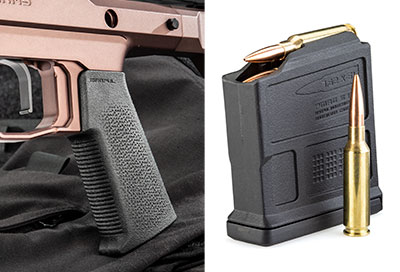
This was a very unscientific comparison, and the Modern Precision Rifle testing was performed with an ambient temperature 4 degrees warmer than the previous test. Even so, the surface of the carbon-fiber portions of the Christensen barrel felt cooler to the touch, regardless of round count and laser measurements. The highest temperature measured on either rifle was 130 degrees, just behind the Modern Precision Rifle’s muzzle brake. That was at the 120-round mark, with significant time lags for ammo changes, bore cleaning and note-taking throughout.
I saw ample heat in my riflescope’s field-of-view as testing progressed. At the 50-round mark, the heat waves were visible but not obscuring. At 100 rounds they caused me to slow testing as I waited for the system to cool down enough to give me a clear target image. By the end of testing—140 rounds total—the heat was bad enough that I had to wait approximately 30 seconds between each shot in order to see my target clearly. By comparison, the lightest contour steel barrels in this chambering begin to show their heat around the 20-round mark and tend to stay hotter longer. Heavy steel contours are required to give that heat a bigger sink and more surface area through which to cool at a faster rate.
The Modern Precision Rifle handled extremely well throughout my test. Its action cycled smoothly, while extraction, ejection and feeding were all flawless. The test gun’s trigger broke cleanly and consistently, shot after shot. Accuracy was excellent and were it not for the fact that I included one factory hunting load that seldom shoots accurately, the sample rifle would have bested all others I have tested in the overall accuracy department. Of the three good loads I used, the worst group fired measured .72 MOA in extreme spread. The best group of the day was just .19 MOA. That is fantastic performance from a factory rifle that weighs in at less than 8 pounds. This rifle would be an excellent choice for back-country hunting over long distances or for other situations where shedding weight without sacrificing accuracy or velocity is most important.
